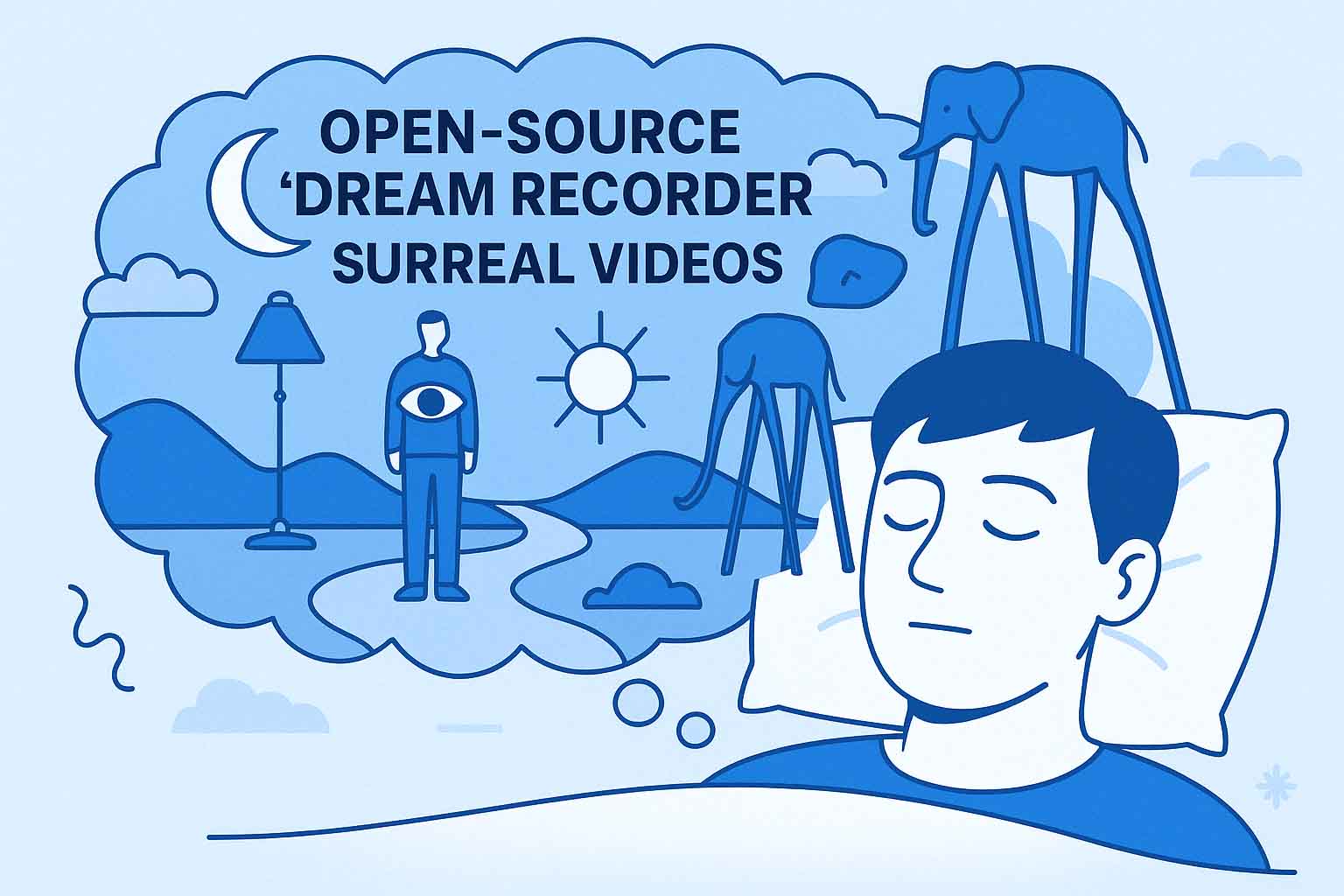Have you ever wished you could watch your dreams right after waking up? Imagine capturing the fleeting, hazy images from your subconscious and transforming them into actual videos. While this might sound like the premise of a sci-fi movie, a fascinating project is making it a reality — and it’s open source.
What Is the Dream Recorder and How Does It Work?
Recently, a captivating video showcased a device called the “dream recorder” by Modem. This little gadget acts like a personal dream diary, but instead of writing down what you dreamed, you describe it aloud, and AI takes over to create a short, dreamlike video.
Think of the output as ultra-low-definition, blurry footage—more akin to a fever dream than a polished Hollywood production. The visuals morph fluidly, capturing the surreal, fragmented essence of actual dreams. What makes this device even more intriguing is its ability to store up to seven videos—one for each day of the week—giving you an entire week’s worth of dream recollections in visual form.
Why Is an Open-Source Dream Recorder a Game-Changer?
The fact that this project is open source is a game-changing detail. The entire setup can be downloaded from GitHub, and anyone with a Raspberry Pi and a 3D printer can build their own dream recorder at home. This democratizes not only access to cutting-edge AI but also encourages artistic experimentation and self-exploration.
Artists and writers are already embracing this device as a tool to unlock creativity hidden in their subconscious. By visualizing dreams, they can generate new ideas, narratives, and artworks that would otherwise languish in the intangible folds of the mind.
How Does This Impact Our Relationship With Technology and the Self?
Turning dreams into visual content opens fascinating ethical and philosophical questions. What does it mean for AI to interpret and recreate the personal, often private experiences of our minds? How accurate or biased might these visualizations be?
From an AI ethics perspective, this intersection of technology and privacy invites deeper discussions. Open-source projects encourage transparency but also raise concerns about consent and the potential misuse of intimate data. For more insights and ongoing ethical debates about AI, see more AI news and ethics topics.
The Future of Dream Visualization
While the dream recorder’s videos are intentionally blurry and surreal—staying true to the ephemeral nature of dreams—the technology hints at a future where our inner lives can be explored and shared visually.
Whether for creative inspiration, therapeutic reflection, or sheer curiosity, this device invites us to rethink the boundary between the unconscious mind and digital storytelling.
Ready to build your own dream diary?
If you’re intrigued by the possibilities, check out the device’s open-source files on GitHub and start crafting your own dream visualization tool. Who knew your dreams could become art so easily?
—
SEO-Focused FAQs
What is this video about?
The video introduces a device called the dream recorder by Modem, which converts spoken dream descriptions into surreal, low-definition videos using AI, creating a personal visual dream diary.
Why is this important?
It showcases innovative use of AI to visualize subconscious experiences, blending technology with creativity and prompting new conversations around the ethics of personal data and AI interpretation.
How can I build my own dream recorder?
Since the project is open source, you can access all necessary files from GitHub and create your own dream recorder using a Raspberry Pi and 3D printer.
FAQ
Q1: What is this video about?
The video introduces a device called the dream recorder by Modem, which converts spoken dream descriptions into surreal, low-definition videos using AI, creating a personal visual dream diary.
Q2: Why is this important?
It showcases innovative use of AI to visualize subconscious experiences, blending technology with creativity and prompting new conversations around the ethics of personal data and AI interpretation.
Q3: How can I build my own dream recorder?
Since the project is open source, you can access all necessary files from GitHub and create your own dream recorder using a Raspberry Pi and 3D printer.
📢 Want more insights like this? Explore more trending topics.



